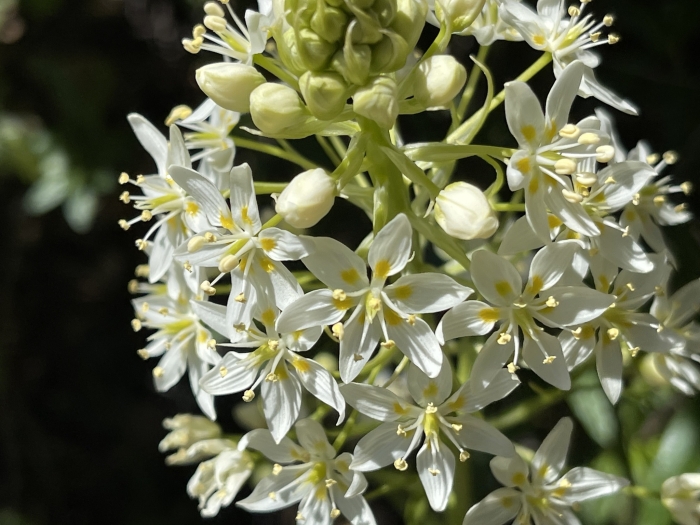Fremont’s Deathcamas
(Toxicoscordion fremontii)
Fremont’s Deathcamas (Toxicoscordion fremontii)
/
/

rappman
CC BY 4.0
Image By:
rappman
Recorded By:
Copyright:
CC BY 4.0
Copyright Notice:
Photo by: rappman | License Type: CC BY 4.0 | License URL: http://creativecommons.org/licenses/by/4.0/ | Rights Holder: rappman | Publisher: iNaturalist | Date Created: 2021-03-26T19:49:10Z |



















































Estimated Native Range
Summary
Toxicoscordion fremontii, commonly known as Fremont’s Deathcamas, is a deciduous perennial herb native to a variety of habitats including open woodlands, chaparral, grasslands, and forest edges in California, Northwestern Mexico, and Oregon. This species is particularly adapted to Mediterranean climates with wet winters and dry summers. It grows from a bulb that is more or less spherical, with a diameter of 20–35 mm. The leaves are basal, linear, and can reach up to half a meter in length, although they are typically around 25 cm. The plant produces clusters of flowers from March to June, which are star-shaped due to the symmetrical arrangement of six tepals (three petals and three petal-like sepals). Each flower is 1–4 cm across and is not particularly showy, with colors ranging from white to cream or greenish.
Fremont’s Deathcamas is appreciated for its unique star-shaped flowers and its adaptability to dry conditions, making it suitable for xeriscaping and native plant gardens. It is also used in restoration projects due to its native status and ability to thrive in local conditions. In cultivation, it requires full sun exposure and well-drained soils, tolerating both medium and fast drainage. It is drought-tolerant once established and requires low amounts of water. Gardeners should be cautious as all parts of the plant are toxic if ingested. There are no popular garden cultivars due to its toxic nature and the flowers’ subtle appearance.CC BY-SA 4.0
Fremont’s Deathcamas is appreciated for its unique star-shaped flowers and its adaptability to dry conditions, making it suitable for xeriscaping and native plant gardens. It is also used in restoration projects due to its native status and ability to thrive in local conditions. In cultivation, it requires full sun exposure and well-drained soils, tolerating both medium and fast drainage. It is drought-tolerant once established and requires low amounts of water. Gardeners should be cautious as all parts of the plant are toxic if ingested. There are no popular garden cultivars due to its toxic nature and the flowers’ subtle appearance.CC BY-SA 4.0
Plant Description
- Plant Type: Herb
- Height: 2-3 feet
- Width: 1-2 feet
- Growth Rate: Moderate
- Flower Color: White, Cream
- Flowering Season: Spring
- Leaf Retention: Deciduous
Growth Requirements
- Sun: Full Sun
- Water: Low
- Drainage: Medium, Fast
Common Uses
Bank Stabilization, Bee Garden, Border Plant, Butterfly Garden, Drought Tolerant, Low Maintenance, Showy Flowers
Natural Habitat
Native to open woodlands, chaparral, grasslands, and forest edges in California, Northwestern Mexico, and Oregon
Other Names
Common Names: Common Star Lily, Star Zigadene, Fremont’s Death Camas, Star Zygadene, Star-Lily
Scientific Names: , Zigadenus fremontii, Toxicoscordion fremontii, Zigadenus glaberrimus, Zygadenus glaberrimus, Toxicoscordion fremontii var. minor, Zigadenus fremontii var. fremontii, Zygadenus fremontii, Zigadenus fremontii var. minor, Anticlea fremontii
GBIF Accepted Name: Toxicoscordion fremontii (Torr.) Rydb.